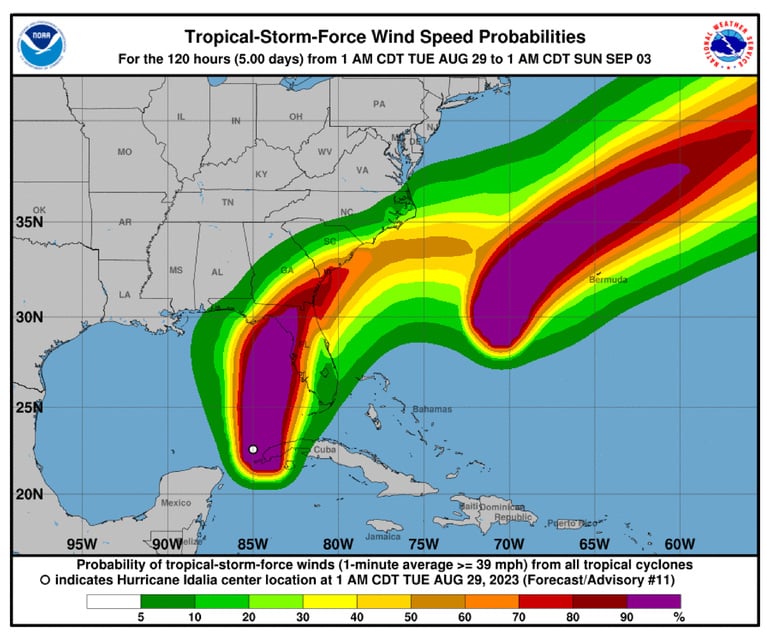Every claim and restoration professional knows that no twoprojects are the same — some are more complicated than others,especially those involving crime and trauma scenes. These jobsrequire a more thorough approach than most restoration projects.With that in mind, let's compare how two different companiesresponded to the same gruesome situation.
|A 20-year-old son was to house sit after his parents left thecountry for a long-planned world tour. But the joy of vacation soonfaded when, three weeks after mom and dad departed, a neighborsmelled a terrible odor and called the police. When authoritiesarrived, they found that the apparently angst-ridden son haddecided to take his own life in a room on the top floor of thetwo-story house.
|The scene that they found was beyond comprehension. Blood andbodily fluids had seeped from the second floor to the first floorvia the kitchen and then down into the basement. The odor was sosevere that when police arrived, they immediately turned on anattic fan situated just above the body to evacuate the odors sothey could continue working. To make matters even worse, the sonwas HIV+.
|Where to Begin?
|During the course of events, the insurance adjuster contacted alocal bio-cleaning company. The technician/owner not only cleanedup the visible blood in the upstairs bathroom, but also the fluidthat had overflowed into the adjacent loft area by removing thecarpet and pad. Despite his diligence in disinfecting the hardwoodfloors and the visible blood on the kitchen cabinets (never openinga drawer where fresh blood was later discovered), the techniciannever entered the basement. In addition to these surfaces, thecarpet also was affected, as a little dog that had been in the homeat the time of the incident had tracked blood throughout the house.After cleaning the blood from the carpet with bleach, thetechnician declared the job complete, charged the insurance company$1,000, and left.
||The insurance adjuster was then left to grapple with the home'spervasive odor, which had not subsided in the least. The adjustercalled in another service with several years of bio-cleaningexperience and training related to the medical field. To finishthis job, the more experienced company deemed it necessary tocompletely dismantle the upstairs bathroom and remove theblood-soaked underlying sub-floor, ceiling, and a small section ofwall. Subsequently, the company removed a 10-foot cabinet islandwith an overhead custom oak light fixture, which was situated inthe kitchen; eight square feet of hardwood flooring; and two squarefeet of sub-flooring.
|In addition, the team cleaned the basement floor and the HVACsystem because blood had infiltrated the return air vent on thepanning. The floor joists were planed and sanded to removecontaminants and then treated and sealed. The carpet where the doghad walked also was replaced because there is generally noguarantee that contaminates can be thoroughly removed from textiles(in any case, this patch of carpet had been bleached out inpolka-dot fashion from the first company's efforts). The technicianwent on to treat the attic, hauling away the soiled insulation andinstalling new insulation. The overall deodorization of this hometook two full weeks, as different steps of deodorization wereapplied. At this point, the second company declared the jobcomplete, submitted an invoice of more than $13,000, and dispatcheda build-back crew.
|Had the work not been completed by an experienced company, aserious blowfly and maggot problem would have developed, amountingto thousands of blowflies — or maybe even tens of thousands. Asverified by Dr. Ralph Williams, head of forensic entomology atPurdue University, during an infestation, the flies' bloodyexcrement and regurgitations would touch every surface of the home,further compounding the liabilities of the cleanup work because ofsecondary infection potentials. As it was, the second andmore-experienced company offered a greater value than the firstbecause it removed all of the contaminants from within the home,thereby removing liabilities of others coming into contact with apotential contamination.
|Making the Right Call
|So what lessons should an adjuster take away from this case? Howshould he go about choosing an effective, reputable bio-cleaningcompany? There are several requirements a bio-cleaning company mustmeet before it can legally dispatch a technician to clean a traumasite. According to the Occupational Safety and HealthAdministration (OSHA), everyone who enters a site must havetraining in its exposure control plan, hazardous communicationplan, and respirator plan. Outlined below are the basic OSHAregulations for this industry; depending on the site and the scopeof work, other regulations may apply.
||The employee must receive training in universal precautions,personal protective equipment (PPE), epidemiology, and materialdata safety sheets for the chemical compounds they will use, aswell as proper use of the same. The employee should obtain furthertraining in the proper use of engineering and work practicecontrols. Each technician should have a hepatitis-B vaccine 10 daysbefore entering a work site. Because there are times when a companymay have to remove a certain amount of structure, it should have abasic knowledge of both residential and commercial construction aswell as containment setup. In fact, many localities require acontractor's license prior to removing structural materials and atransporter's license to rid the site of medical waste.
|All states mandate that a bio-cleaning company have a contractwith a medical waste disposal company so that it can properly riditself of these materials and so a manifest can be generated tooffer proof of the same. Many U.S. states do not require trainingand certification in the actual disciplines of this industry;instead, they rely on the OSHA regulations to oversee it.California has the Trauma Waste Practitioners Act. Louisiana alsohas a regulation in place, but it is said to be weak andconvoluted. Other states are following suit by taking a hard lookat regulation. The certifications available in this industry aregenerally granted from various expert individuals and associations;however, none are ANSI or IICRC-certifications at this time.
|Now it should be clear what is required and why some initialinvestigation into a restoration company will prove to bebeneficial. In the example presented earlier, the first cleanupcompany consisted of an ex-firefighter who felt he was qualifiedbecause he had received most of the required technical training asa firefighter. Having also worked EMS and been privy to murder andsuicide situations during that time, the ex-firefighter wasequipped with PPE knowledge as well as the wherewithal to maintainhis composure during difficult times. Although this training mighthave been otherwise helpful, he lacked experience in propercleaning techniques, construction, and how to practically applywhat he learned as it pertains to this trade.
|What to Look For
|There are several other issues that are specific to crime sceneand trauma cleanup jobs that adjusters should be aware of. Perhapsmost important is deodorization, which has become a science in andof itself. Most companies do not guarantee or warrantydeodorization because of the intrinsic difficulties in solving theproblem. In severe cases, deodorization can take several days andsteps to successfully complete.
|In difficult cases, there is no magic bullet, but the IICRC doesoffer deodorization certification for this discipline. There havebeen companies that spread the belief that odor alone cancontaminate and spread disease in an area or a home, but this is afalse assumption. If a company espouses this misconception, beleery of its abilities as it may lack appropriate training.
||A bio-cleaning company takes on certain liabilities to ensurethat the area and items are cleaned or remediated from allcontaminants and, of course, proper insurance coverages should bein place. Most companies have a minimum general liability umbrellaof $1 million or more, and in most states pollution insurance isnot required. The insured parties or their representatives can askfor a statement of procedure from the bio-cleaning company. Thisstatement outlines the processes and chemicals used in the cleanup.Some of the savvier, highly trained companies can perform certaintests to show a great reduction of microorganisms present onsurfaces. The company should have an impressive track record withother insurance companies and possibly with management companiesthat they can list as referrals; however, supplying the name of anindividual or family as a reference would be considered a breach inprivacy.
|There is a difference in crime and trauma scene cleanupcompanies in their overall abilities and knowledge sets. A fewcompanies in the U.S. consider themselves more as biohazardmanagement firms and can handle or assist in tasks such asinfection control and disease outbreak response for such things asmeningitis. These companies have individuals who can act asconsultants and handle a more serious contamination such asCreutzfeldt-Jacobs Disease (CJD), which is akin to mad-cow diseasein humans. What is interesting about CJD is that it is neither avirus nor a bacterium. It is a protein called a prion, and it isvery hard to kill. Certain disinfectants set it, and more than 300degrees Fahrenheit of surface temperature heat must be administeredover a period of time to kill it. Very few of us have had theoccasion to clean this type of contamination. Other companies havehandled anthrax and routinely clean cruise ships and restaurantsfor Norwalk and Novo viruses.
|On the automobile side of cleanup work, adjusters should enlistthe expertise of someone who has experience in working on theinteriors of vehicles. Interiors can be highly technical,necessitating special tools. In other words, a novice technicianshould not attempt the cleanup. According to the Federal MotorVehicle Safety Standard 207/210, the bolts holding seats and safetybelts in place should never be reused, as it is a direct violationof a federal law. If wires in the vehicle are damaged during theremoval of the carpeting, seating, or other interior parts, thenelectrical problems with the vehicle may result in the future.
|Although most insurance companies do not have a preferredprovider list designated for locating bio-cleaning companies, itwould be good for adjusters to open up a resource database withintheir own companies or departments and take some time to intervieweach of these owners to test their overall knowledge sets. Therewill be times when a quick response will be imperative to help yourinsureds in a timely fashion.
|Don M. McNulty is the owner and operator of Bio CleaningServices of America, Inc. He can be reached at 888-229-7975,www.biocleaningservices.com.
Want to continue reading?
Become a Free PropertyCasualty360 Digital Reader
Your access to unlimited PropertyCasualty360 content isn’t changing.
Once you are an ALM digital member, you’ll receive:
- All PropertyCasualty360.com news coverage, best practices, and in-depth analysis.
- Educational webcasts, resources from industry leaders, and informative newsletters.
- Other award-winning websites including BenefitsPRO.com and ThinkAdvisor.com.
Already have an account? Sign In
© 2024 ALM Global, LLC, All Rights Reserved. Request academic re-use from www.copyright.com. All other uses, submit a request to [email protected]. For more information visit Asset & Logo Licensing.








